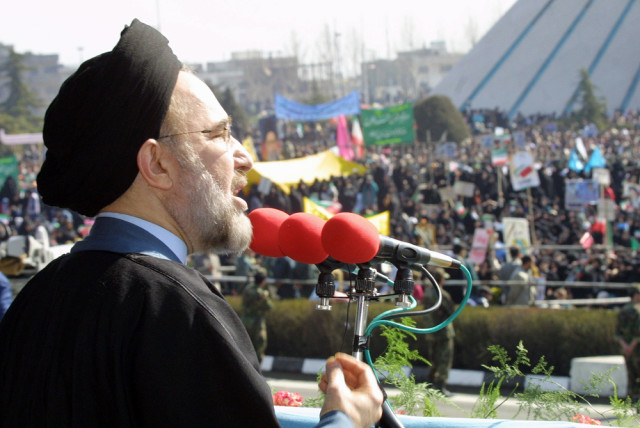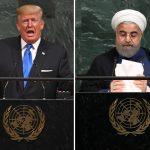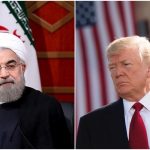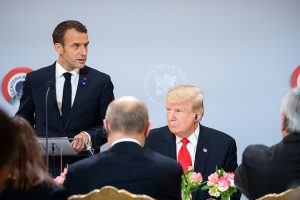by Mohammad Ali Kadivar
It took only a few months after president Hassan Rouhani’s inauguration for the broad but fragile alliance behind him to face challenges after the shutdown of a reformist newspaper as well as the harassment of the daughters of Mir Hossein Mousavi and Zahra Rahnavard, two leaders of the opposition Green Movement who are still under house arrest.
Reformists and supporters of the Green Movement that had voted for Rouhani in June 2013, outraged from these incidents, urged him to take a more aggressive and confrontational stance against hardliners. Ayatollah Dastgheib, the most outspoken clerical supporter of the Greens who had also endorsed Rouhani in his presidential campaign, reminded the President that his vote for him had been on the condition that political prisoners be released and Rouhani should do anything to fulfill that condition. Jaras, a major website of the Green Movement, also published multiple articles with a similar theme. One of those articles warned Rouhani that if he stayed silent and did not join popular forces, he would be defeated from that point forward. The Organization of Iran’s Republicans, an elite opposition group in exile that has an astute strategic vision, concluded that these actions show that Iran’s Leader and governmental organizations under his supervision are determined to abort Rouhani’s policies, similar to what they did in paralyzing the reformist administration of Mohammad Khatami from 1997 to 2005.
Responding to this wave of criticism on Oct. 30, former president Khatami, a key supporter of Rouhani in the 2013 election, stated that hardliners “want to detach Rouhani from his social backbone, and pretend that his administration is inefficient.” Khatami also highlighted the positive role of the Leader Ali Khamenei in the outcome of the 2013 election, and asked the youth in particular to be patient and maintain realistic expectations for Rouhani. Political commentators in the opposition received this speech rather differently. While some urged the people to stay moderate and take Khatami’s advice seriously, others recalled that during his presidency, Khatami’s approach to demobilizing his popular supporters and following reformist demands through established institutions and elite negotiations was ultimately unsuccessful.
As different sides of the debate draw analogies and examples from the Reform Era (1997-2005), the content of their arguments resonate a great deal with hot discussions during that eight year period. In a recently published article in the American Sociological Review, I explain the major strategic debates within the Reform Movement and how these strategic chasms derived coalition changes within the movement. I argue that the positions of reformist actors in these debates can be better understood and classified along the lines of three different dimensions: optimism about the incumbent elite in the Islamic Republic of Iran, optimism about the possibility of reform through the institutions of the Islamic Republic, and optimism about the viability and consequences of popular mobilization. The convergence or divergence of reformist groups’ perceptions along these three dimensions drove the formation and disintegration of alliances in the Reform Movement.
The Reform Movement took off in Khatami’s landslide victory in the 1997 presidential election. It hoped to promote the rule of law, hold officeholders accountable, and strengthen civil society. Three major actors backed Khatami’s campaign and later constituted the grand reformist alliance that supported Khatami’s policies and plans: a clerical reformist party (the Assembly of Militant Clerics), two lay reformist parties (the Organization of the Mujahedin of the Islamic Revolution and the Participation Front), and the student movement (represented by the Office for Strengthening Unity).
These three groups all shared a strategic assessment of the political context in Iran at the time that was key to sustaining the alliance. This assessment, the political negotiation model, was based on optimism toward the incumbent elite in the Islamic Republic, optimism about reforming the regime through its own institutions, and pessimism about the consequences of popular mobilization for the Reform project. This model indicated that dialogue and negotiation with hardliners would finally convince them of the benefits of reformism.
“The best way to engage the enemies of civil society is to give them this opportunity to rethink and to let them readjust,” one affiliated newspaper suggested. “We should show them in practice that transition to democracy presents greater opportunities than threats” (Hayat-e No, June 1, 2000). This model was also credited with stating that institutions of the Islamic Republic were capable of reforming the regime from within (Asr-e Ma, December 1999/January 2000). As a journalist affiliated with the lay reformist parties put it, the political institutions of the Islamic Republic were not “dead-ends.” Indeed, he continued, “there is no way to change the world than to act within legal institutions” (Neshat, July 13, 1999). In addition, supporters of this model feared that because of deep grievances, mass mobilization would stir up emotions, spawning radicalism and provide hardliners with an excuse for repression, possibly leading to civil war. In addition, these reformists felt the Reform Movement lacked the organizational capacity to keep public demonstrations under control.
This model was dominant among the clerical reformist party, lay reformist parties, and the major organization of the student movement between 1997 and 2000, and even survived earlier waves of repression. At the same time, the nationalist opposition — the Iran Liberation Movement, and the Nationalist-Religious Activists — were the one set of reform organizations that did not share this view of political opportunities. Their perception profile, which I call the political-activist model, was not optimistic about persuading the conservative elite of the Islamic Republic to accept democratization, and stressed the possibility and necessity of contentious collective action to confront the regime. Nationalist groups encouraged Khatami to adopt the political style of Mohammad Mossadeq, the democratically elected prime minister who mobilized mass support for the nationalization of Iran’s oil industry in 1950, forcing his better-placed opponents within Iran’s political institutions to accept his programs (Iran Liberation Movement, statement #1369, May 19, 1999). At the same time, the nationalist opposition shared the political-negotiation view that Iran’s political institutions offered opportunities for democratization. Nonetheless, nationalist groups did not act in alliance with the other three reformist groups. The alliance in this period was only between groups that shared the political-negotiation model.
The escalation of repression against the movement in 2000 triggered new strategic debates within, disillusioned many reform movement supporters about the political-negotiation model and transformed their political perception. The most radical reaction came from the student movement. They became discouraged about the prospects of convincing hardliners through dialogue as well as reforming the regime through its own political institutions. The statement of the Unity Office (the main organization of the student movement) after the 2003 municipal elections explained this position: “To speak of the ineffectiveness of the May 23 Front is to acknowledge the reality that the strategy of ‘self-reforming’ the regime has reached a dead-end. Of course, this is not just because of the weaknesses of the reformists. The fact that the hard core of power does not surrender to the process of reform has been one of the root causes of this dead-end” (Asr-e No, March 10, 2003). Accordingly, they did not participate in any elections from 2000 to 2005.
Lay Reformist parties ultimately lost their optimism about Iran’s dominant elite and stated that reformists in the government should take a confrontational position and use all of their institutional and legal authorities in their struggle with the hardliners. This new perception brought these groups closer to the Nationalist groups who were also pessimistic about Iran’s incumbent elite but optimistic about the capacities of Iran’s political institutions. At the same time, president Khatami and his allies in the clerical reformist party maintained the negotiation profile even after the Guardian Council disqualified thousands of reformist candidates from the 2004 parliamentary elections, including dozens of incumbents.
Shifting perception profiles resulted in a new set of alliances during the 2005 presidential election. Adherents of the political-negotiation model supported Mehdi Karroubi, who emphasized his pragmatism and bargaining skills. The student movement’s Unity Office boycotted the election based on its radical perception profile that saw no chance of reforming the regime through institutions such as elections. Lay reformist groups nominated Mostafa Mo’in, who stressed his confrontational stance, and promised for example that he would never hold elections with mass candidate disqualifications, as Khatami had done in 2004 (ISNA, May 15, 2005).
When the Guardian Council disqualified the candidate of the Nationalist opposition, they entered into negotiations with the lay reformist parties and chose to support Mo’in’s candidacy, formalizing the alliance between the lay reformist parties and the nationalist groups. They justified this decision by pointing to the threat they perceived if the hardliners were to solidify control of all political institutions, adding the executive branch to their control of parliament, the municipal councils, and the unelected branches of government. Late Ezzatollah Sahabi, head of the Nationalist-Religious Activists at the time said that “if we do not participate in the election, the right faction will win the election, and that will be a disaster for the country, as we can observe in the behavior of the mayor of Tehran [Mahmoud Ahmadinejad]” (ISNA, June 6, 2005). This marked the first time the nationalist opposition had allied with other opposition groups since the 1979 revolution and resulted in a coordinated electoral campaign on behalf of Mo’in. Although this short-term coalition was not successful in the 2005 election, it became the pioneer strategic cooperation among pro-democratic forces of different ideologies and backgrounds within Iranian politics.
The outcome of the 2005 election was disastrous for reformists though; their votes were divided between multiple candidates and Mahmoud Ahmadinejad managed to win the election in two rounds.
The 2009 massive protests reshuffled the perception profiles of many reformist groups and individuals. However, eight years after the end of the Reform Era, we again observe that supporters of democratic change in Iranian politics are debating similar themes about the possibility of reform through negotiation with Iran’s incumbent elite, participation in political institutions, and popular mobilization.
Are these debates and quarrels going to create fractures in the alliance behind Rouhani? Is the moderation project repeating the fate of the Reform Movement, as several well-known commentators fear? While there are definite similarities between Iran’s political landscapes now and the period between 1997 and 2005, there are also important disparities. One distinctive feature of these two eras is the fact that now we have the experience of the Reform Era for reference. While multiple political actors draw examples from the Reform Era to make sense of the current situation, they are also working to avoid the same mistakes by charting a new way to the future rather than engaging in a tragic repetition of history.






Looking at the past to tell the future. Isn’t Rouhani walking on egg shells, so to speak? Ayatollah K. told the hardliners to back off too, didn’t he? So now, even the ones who back Rouhani, are getting impatient for change. I know this sounds absurd, but I wonder, has Netanyahoo penetrated into Iranian politics too? Considering the hardships that the West has inflected upon Iran, squeezing the money supply of even the hardliners and others, perhaps there exists a funneling of money to said hardliners, just as with the U.S.Congress, is within the realm of possibility. The saying goes: “Everyone has their price, when it comes to corruption”. Wouldn’t that be something if it turns out to be true?
A good deal may not have even been possible, since Iran’s new, superficially more conciliatory president, Hassan Rouhani, has never held the reins in Iran. His willingness to negotiate, even if genuine, is meaningless unless the Supreme Leader comes to a similar conclusion. This has become more obvious as each stage of Rouhani’s charm offensive — overhyped by the Western media in the first place — has been undercut by more powerful elements of Iran’s regime.